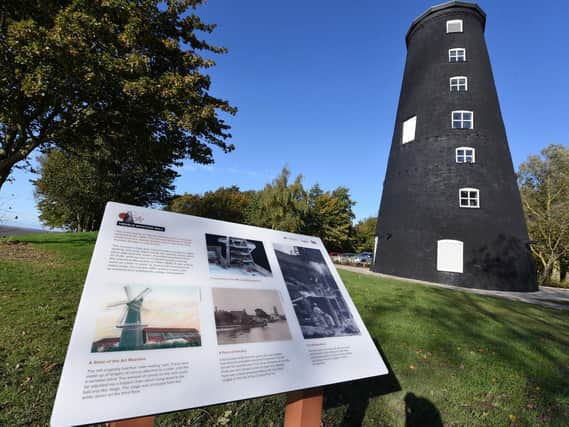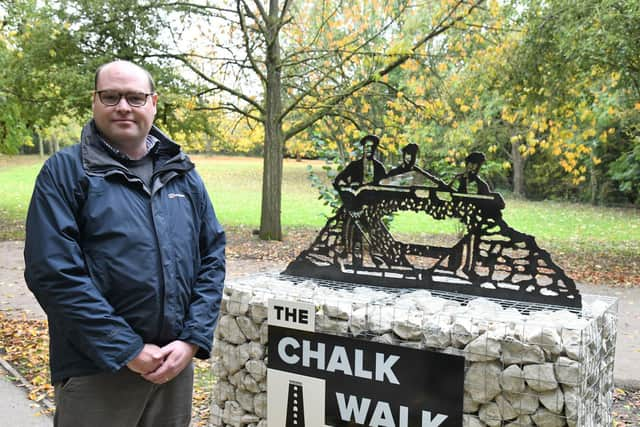New visitor trail opens exploring forgotten history of Hessle's Little Switzerland near Hull


A new heritage “Chalk Walk” which opened on Monday has already attracted visitors from Brighton, Norfolk and Scotland.
The trail wends its way through the older part of the Humber Bridge Country Park, which the Victorians likened to “Little Switzerland” because of the sheer walls and light snow-like dusting of chalk powder everywhere.
Advertisement
Hide AdAdvertisement
Hide AdIt ends up at an early 19th century mill on the foreshore where the chalk used to be crushed.


The mill has been refurbished as part of a National Lottery Heritage and East Riding Council funded project, costing £968,869, with the bulk of the money going on repairs.
Project officer Dr Alex Ombler said: “People just presume it’s a flour mill and they didn’t know the country park used to be a chalk quarry.
“We have a fantastic scale model of what it used to look like which we are showing in the base of the tower.
Advertisement
Hide AdAdvertisement
Hide Ad“The first record of a quarry on this site is 1317, but it is quite probable that the Romans ground chalk here. Their roads were made from chalk rubble and they used to make lime mortar from the chalk for their walls.
“It was in continuos use as a quarry up to the 1970s. They were moving further and further inland and the quarry parts fell into disuse and the greenery returned.”
The opening of the Humber Bridge in 1981 brought a new focus to the site, which had been bought by Humberside County Council the previous decade.
It was opened to the public in 1986, and later became a designated Local Nature Reserve welcoming more than 100,000 visitors per year.
Advertisement
Hide AdAdvertisement
Hide AdIn the early 1800s a number of the independent quarry operators combined to build a wind-powered whiting works on the foreshore.
Whiting was primarily used as a filler in putty and later for use in the burgeoning rubber, paint and plastics industries.
The works are thought to have ceased production in the 1950s when whiting substitutes were introduced into Britain from the United States.
There was a second 100m to the north but that's now under the A63 dual carriageway.
Advertisement
Hide AdAdvertisement
Hide AdThe windmill tower is the last surviving building, the rest having been demolished in the 1980s when the foreshore was redeveloped.
The mill is open from 10am to 2pm, Monday to Friday, with just the ground floor currently open and four visitors allowed in at any one time.
Comment Guidelines
National World encourages reader discussion on our stories. User feedback, insights and back-and-forth exchanges add a rich layer of context to reporting. Please review our Community Guidelines before commenting.